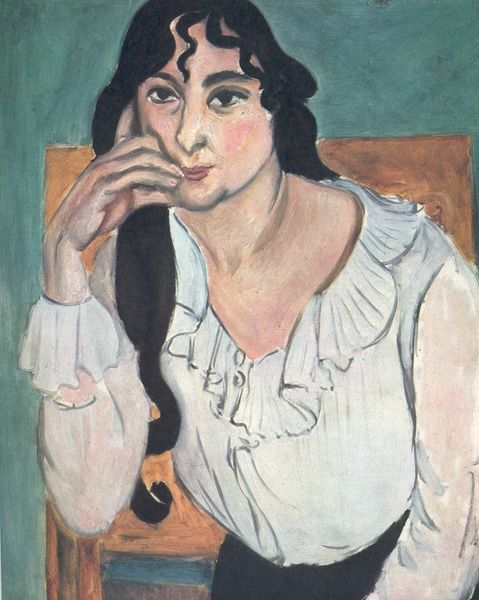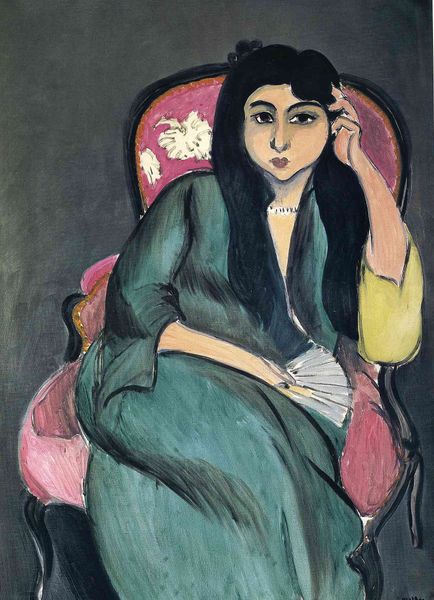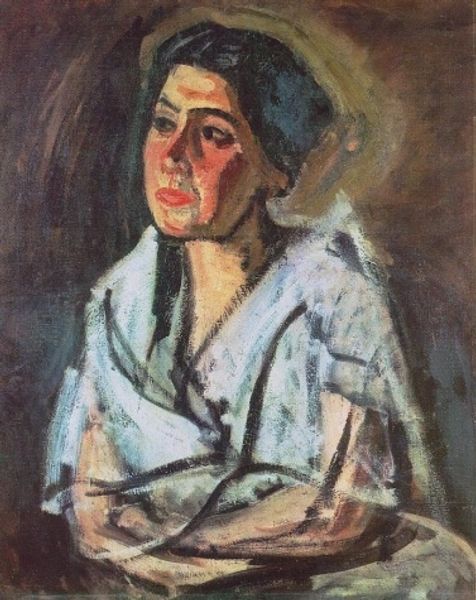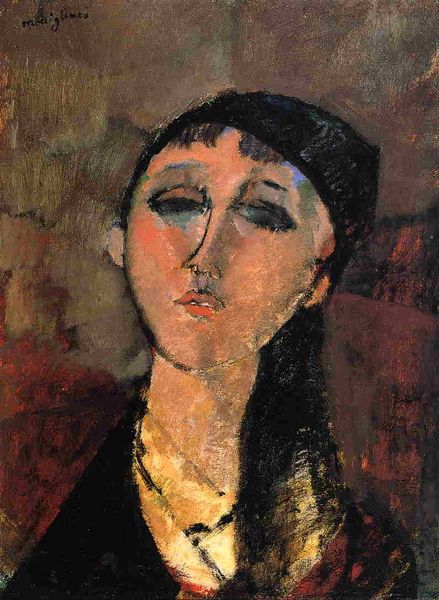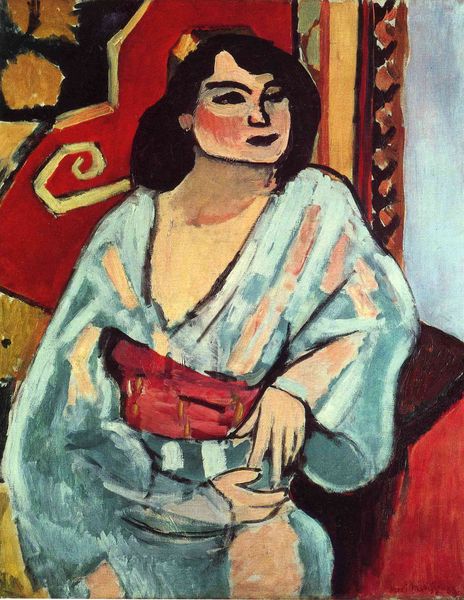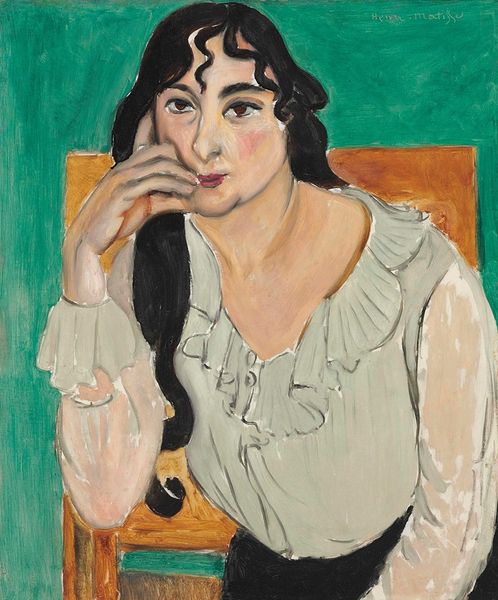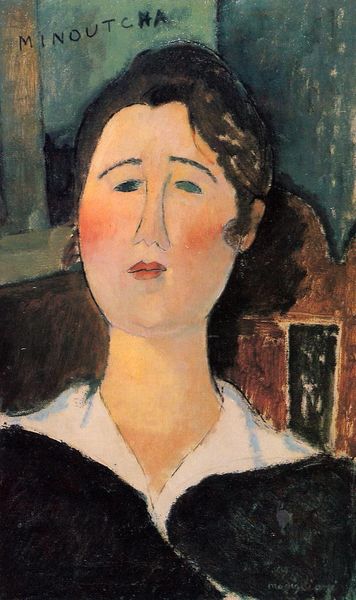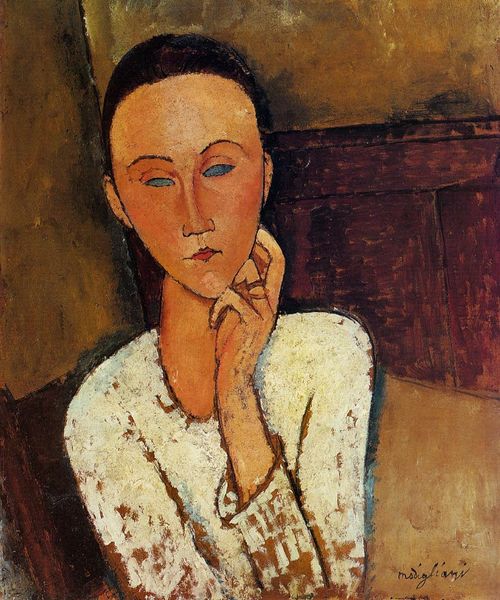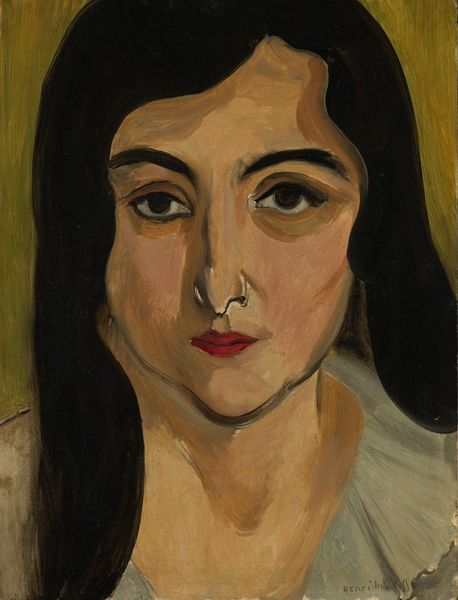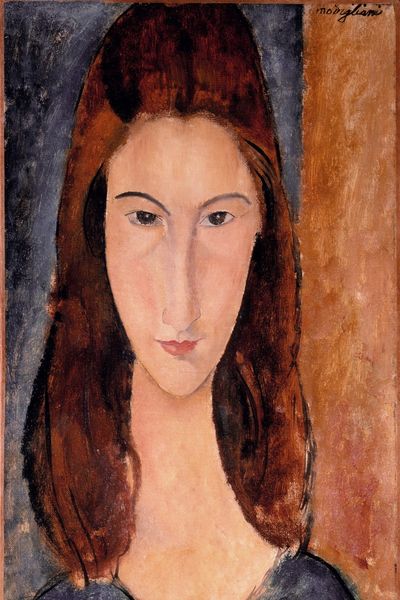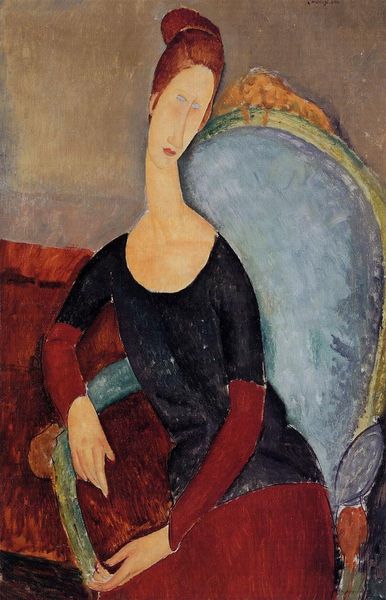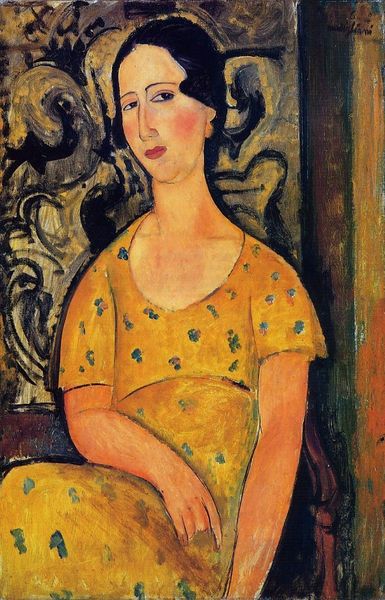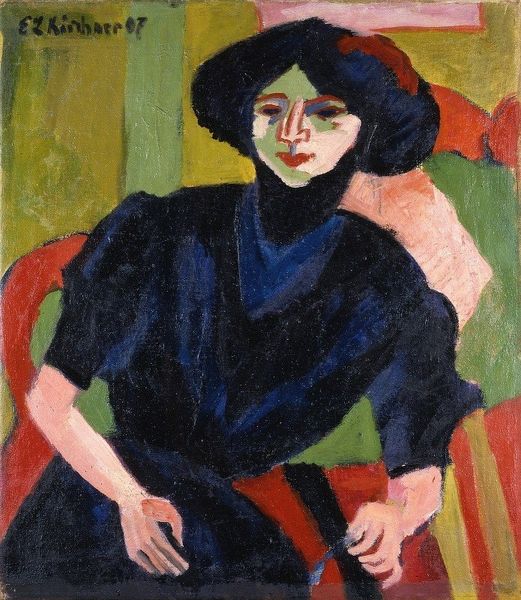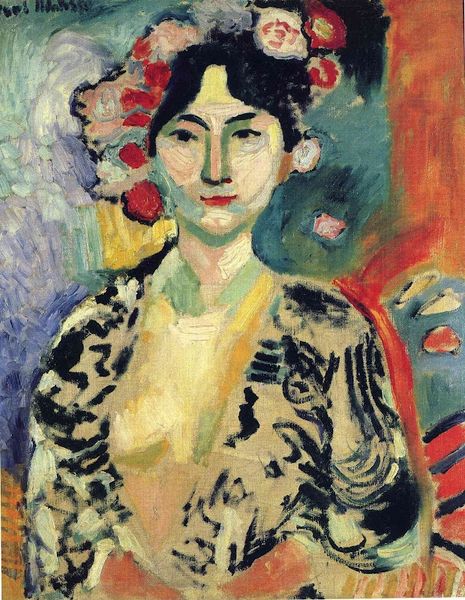
Copyright: Public domain US
Editor: So, here we have Matisse's "Laurette in Green" from 1917, rendered in oil paint. It strikes me with its almost melancholic mood, and the textures in her face seem quite raw. How do you interpret this work? Art Historian: Well, focusing on materiality, let’s consider the oil paint itself. In 1917, what does the availability and cost of oil paints say about the artistic production? Was it mass-produced or something rarer? And look at the brushwork: See how he applied the paint so directly? The roughness becomes integral, resisting a smooth, illusionistic finish. It calls attention to the *making* of the portrait, and thus invites us to interpret its significance as process more than ‘likeness.’ Editor: That’s interesting! I was so focused on the subject, the woman herself, but you’re pointing out how the application of the paint changes the meaning. What do you mean by "likeness"? Art Historian: Often, portraits serve a market purpose – wealthy clients seek images which are ennobling, beautifying, idealising the subject’s social position and so on. How does *this* portrait participate in, or actively defy such commercial pressures? The green dress is almost utilitarian. He presents the labour and materials which were engaged in making the painting visible to the viewer as part of what constitutes the image. Editor: So it's not about a realistic depiction so much as making the process and materials part of the story? Art Historian: Exactly! And it raises interesting questions: Was Laurette also a worker, a maker? It reframes how we think about artistic value itself, doesn't it? The artist can value those involved in the material creation. Editor: I see. Looking at it that way, the focus shifts from just admiring a portrait to considering the whole context of its production. Thanks! Art Historian: Indeed, and hopefully prompts you to reflect upon how all the materials, labour and social aspects intertwine within art, offering diverse meanings beyond the immediately visible.
Comments
No comments
Be the first to comment and join the conversation on the ultimate creative platform.
